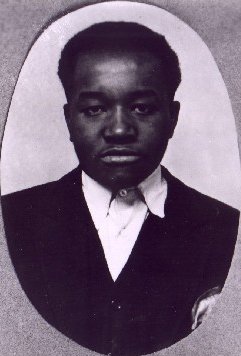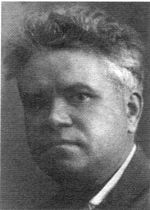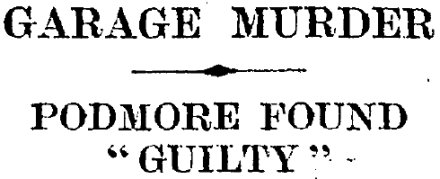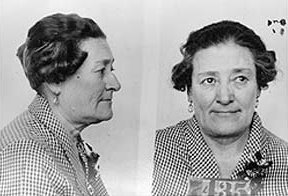Like all national mythologies, it’s an idea with a history of its own — and not one that enjoyed anything like its contemporary popularity at the moment that, say, Byzantium fell to the Turks. After all, those Byzantines were were an emblem of defeat.
Only in the 19th century did Byzantium as a kindred civilization emerge widely for Russians in something like the shape of the myth as it exists today. No surprise, the scholarly field associated with it, fascinated as it was with kingship and Orthodox Christianity, became associated in the subsequent generations with right-wing politics … and by the end of this post, we will come to the execution during the Stalinist purges of an eminent scholar of Byzantium named Vladimir Beneshevich. While this fate is not surprising on its face for the circumstances, we think the journey of the idea — continuing as it does down to the present day — is well worth the taking. The following is excerpted from Ivanov:
The Byzantine question reappeared in the nineteenth century, when the Russian elite became aware of Russia’s uncertain status among the civilizations of the world. Yet the tone of the discussion had changed: in 1836 the philosopher Pyotr Chaadaev in his ‘Philosophical Letters’, asserted that the very choice made by Rus’ in favour of Constantinople, not Rome, had rendered inevitable the misfortune of Russia: … ‘Driven by a baneful fate, we turned to Byzantium, wretched and despised by nations, for a moral code that was to become the basis of our education’. This was the opening of the debate that has continued until today without any substantial variations in its terms or arguments …
Byzantium as an empire once again gained importance in the middle of the nineteenth century. When the notorious Jakob Fallmerayer [a race theorist later beloved of the Nazis -ed.] enunciated his theory regarding the Slavicization of the Balkans in Byzantine times, he wanted to warn the West against the ‘Russian menace’; the Russophobic nature of his theory notwithstanding, the new trend of thought in Russia, the so-called Slavophiles used it to substantiate their claim to the Byzantine legacy. The earliest Slavophile and the great Russian poet Fyodor Tyutchev had many conversations with Fallmerayer in Munich ‘de fatis byzantinis’, as the latter notes in his diary, in which he also briefly recorded Tyutchev’s ideas: ‘Byzanz Heilige Stadt. Pruritus Rezidenz zu verlegen’. For Tyutchev, as for the other ‘Slavophiles’, Constantinople was a ‘natural’ goal, but it was not an end in itself: in his poem ‘Prophesy’ (1850) Tyutchev implored the Russian tsar: ‘And the vaults of ancient Sophia / In resurrected Byzantium / Will again shelter the altar of Christ. / Throw yourself down in front of it, oh, Tsar of Russia, / And rise as the Tsar of all the Slavs’. The fact that the outbreak of the Crimean War in 1853 coincided with the 400th anniversary of the Fall of Byzantium inspired a new upswing of imperialistic dreams. The poet Apollon Maikov wrote: ‘Let everyone know that the dream of Christian Byzantium is still alive in Russia!’
There were two facets to the Russian debate on the Byzantine legacy: the political one dealt with the fate of Constantinople and the Orthodox Christians after the imminent demise of the Ottoman Empire. Some, like Fyodor Dostoevsky, insisted that ‘Constantinople must become Russian’; others thought that it should become the capital of a Pan-Slavic federation. Saltykov-Shchedrin, a great Russian satirist of the second half of the nineteenth century, mocked the Russian obsession with Byzantium in ‘The History of a Town’. Yet, this discussion on the fate of Constantinople seemed exciting and flattering to wide circles of learned society, especially in the 1870s, when a successful war with Turkey brought Russian troops to the very outskirts of Istanbul.
The other aspect of the Byzantine debate concerned domestic issues: is Russia a unique civilization, with only one predecessor, Byzantium, or is it part of Europe? When the famous German historian Zacharia von Lingenthal proposed a theory that the Byzantine peasant commune had been a Slavic innovation, this hypothetical construct was enthusiastically embraced by the Slavophiles. However, not everyone in Russia regarded the Slavic ‘link’ as indispensable. Konstantin Leontiev, a diplomat and philosopher, despised the Slavs and adored Byzantium. He used it as a symbol of theocracy, which he then offered as a model for emulation. ‘Byzantium gave us all our strength’, he wrote. ‘Under its banner we shall withstand the onslaught of the entire Europe if indeed it dares impose on us the rot and filth of its prescriptions for an earthly paradise’. Of course, he knew next to nothing about Byzantium — to him it was but an ideal construct. In his book Byzantism and Slavdom, which has been highly respected, praised and criticized ever since its publication in 1875, Byzantium proper is mentioned just a few times. Yet Leontiev was the first to coin the term ‘Byzantism’ (as opposed to ‘Byzantinism’), which became commonly used by the admirers of the Empire as a label for a benign tyranny. As a counterbalance, another new coinage, ‘byzantischina’,* emerged as the equivalent of the Western derogatory epithets, such as the German ‘Byzantinismus’ or the French ‘Byzantiner’. The debate about the Byzantine legacy involved prominent public figures such as Alexander Herzen, who condemned Byzantium for ‘debility’, as well as Vladimir Soloviev and Vasilii Rozanov. Rozanov, one of the greatest and most original thinkers of the Russian ‘Silver Age’, objected to Leontiev’s utopian constructs; his observations were so sharp that they are worth quoting at some length:
When, in what epoch were we particularly imbued with Byzantine principles? Wouldn’t everyone agree that it was during the time when Moscow was building the Russian state? But if that is so, why did we absorb these principles not during the period of our child-like receptiveness when Byzantium was alive and close to us, but at the time of our distrustful seclusion when Byzantium had already fallen? … Don’t the Byzantine origins of the Muscovite way of life represent a phenomenon that is far more illusory than real? … So when Byzantium was transformed from a powerful and attractive empire into a slave of Islam … that’s when we want Russia to be imbued with the principles of Byzantium. Isn’t that an illusion? Aren’t we ascribing to the imitation our deeply original and unique aspects? … Sophisticated and depraved Byzantium that mixed abstract disputes of theological and philosophical nature with orgies, with the noise and debauchery of the circus, can hardly be seriously regarded as an antecedent and prototype for Muscovy — morosely silent, stubbornly persistent, far more forceful than devious, so universally unrefined in its thought, taste and emotional inclinations.
Never afraid of internal contradictions, Rozanov in his later writings embraced the idea that Byzantium in fact did play a great role in Russian history, but that its role was negative: ‘Has the millennium of Byzantism in Russia done any good? One can answer with one’s hand on one’s heart: no, it has not! Then be consistent and help liberate Russia from the yoke of Byzantism’.
As the Russian Empire entered the twentieth century, Russian Byzantinism was at its peak: the conquest of the Straits (Bosphoros/Dardanelles) and the erection of a cross over St Sophia were the prime goals of Russian foreign policy. The public sentiments of the time can be illustrated by the fact that in 1912, a young Osip Mandelshtam, whose family tradition barely had any connection with the imperial Orthodox yearnings — he was a Jew who had recently moved with his parents from Poland to St Petersburg — wrote enthusiastic poems about Sophia of Constantinople:
1.
Hagia Sophia — here to stop and stare
The Lord has ordered people and the tsars!
Your dome, as an eyewitness once described it,
As if by chains is hanging from the stars.
2.
To all a shining light — age of Justinian,
When to steal off for foreign gods unseen
Dedicated Diana the Ephesian
Hundred and seven marble columns green.
3.
To what aspired your generous creator,
When high in spirit and in reason blessed,
He laid your features on the ground
And pointed them directions east and west?
4.
The temple shines, in the world’s aura bathing,
And forty windows — triumph of the light;
On sails under the dome the four archangels
Finest of all and basking in delight.
5.
This building will outlast people and ages
So wise and spherical and nobly built
And incandescent weeping of the angels
Will not corrode away the darkened gilt.
The idea that Russia itself was the reincarnation of Byzantium was mot graphically reflected in the architectural style referred to as ‘Byzantine’. This emerged in the second half of the nineteenth century and reached its peak in the first decade of the twentieth century, when 40 ‘Byzantine’ cathedrals were completed all across the Russian Empire as well as beyond Russian borders: in Greece, in Bulgaria, and even in France and Germany (in Biarritz and Kissingen). The most ostentatious and grand among them was the Naval Cathedral of St Nicholas in Kronstadt, whose similarity to Hagia Sophia of Constantinople, both in its exterior and interior decorations, is striking.
Byzantine Studies was one of the pillars of the Russian humanities. In Turkey, the Russian Archaeological Institute in Constantinople held a leading position among the city’s European academic institutions. Naturally the vast majority of scholars involved in Byzantine Studies were monarchists or at least conservatives. The only republican among them was Pavel Bezobrazov, whose book about Michael Psellos was a veiled critique of the Russian imperial bureaucracy. This tradition of ‘Aesopian language’, talking of Byzantium but implying Russia, was later used by Soviet Byzantinists.
The outbreak of World War I further spurred public debate. In 1915, the leading Byzantinist Fyodor Uspenskii submitted to Tsar Nicholas II a memo detailing the urgent steps to be taken after the Russian takeover of Constantinople. In the same year, Archbishop Antonii Khrapovitskii, one of Russia’s most influential clerics (he was the first contender for the Patriarchate) published a plea for the restoration of the Byzantine Empire in its original borders — in a sense, his dreams were even bolder than the appetites of the [Greek irredentist -ed.] ‘Megali Idea’. Yet the official position on Istanbul was less favourable to the Greeks. On 3 March 1915, Tsar Nicholas II told the French ambassador (whose name, ironically, was Paleologue), ‘The city of Constantinople and southern Thrace must be annexed to my Empire’. After the Entente Cordiale accepted his claim, the capture of Tsar’grad looked imminent. On Christmas Day, 1916, the mystical poet Vyacheslav Ivanov implored, ‘Oh Rus’, when you wrap yourself in the purple robes of Tsar’grad, do not serve worldly interests’.
The February revolution of 1917 did not stop the imperial hysteria; instead, the Byzantine question became even more acute. In the atmosphere of overwhelming uncertainty after the fall of the monarchy, some theologians blamed Byzantium for excessive gnosticism and asceticism, which, in their minds, were later planted into the Russian psyche.
The Bolsheviks who came to power in October 1917 could not have cared less about Byzantium, but those on the other side of the barricades did not forget about it: the abrupt collapse of the formidable edifice of the Russian Empire compelled religious and political thinkers to search for the roots of this catastrophe. The famous theologian Sergii Bulgakov,** for example, blamed Byzantium for the loneliness of the Russian culture, which made it vulnerable to pernicious influences.
Together with Christianity, at that fateful moment Russia also adopted all Byzantine insularity and its constraints; it became separated from the whole Western, Christian Europe by a “Great Wall” and remained isolated … Meanwhile, Byzantium’s attitude towards Russia was never sincere or warm, but always arrogant and hollow-hearted.
Bulgakov’s book At the Walls of Chersonnesos, written at the end of the brutal Civil War, in the atmosphere of terror and despair, was all about Byzantium and its legacy, as if they were the primary concerns of the time. The writer Alexei Tolstoy, one of the Russian emigres in Constantinople in 1920, describes the bitter disappointment of a White-Guard officer in this deceptive imperial dream: ‘Byzantium, may it go to hell! So much of our Russian blood has been spilled for this damn Byzantium. It’s the usual Russian stupidity all over again!’
To the Bolsheviks, Byzantium was one of the attributes of tsarism; more generally, for people of the new, avant-garde era, it became a symbol of everything dilapidated, moth-eaten and dusty. From the late 1920s through to the late 1930s, the very word ‘Byzantine’ was banned and was used only in quotation marks. Byzantine scholars became the targets of repressions; Vladimir Beneshevich, the most prominent among them, was executed.

 According to Snook’s testimony, matters fell apart on a motor outing on June 13, 1929, when he attempted to decline a weekend’s canoodle citing his domestic obligations: “She replied, ‘Damn Mrs. Snook. I am going to kill her and get her out of the way.'” And as Hix began raining blows on Dr. Snook, he grabbed a ball-peen hammer from the car toolkit and struck her … and then kept striking.
According to Snook’s testimony, matters fell apart on a motor outing on June 13, 1929, when he attempted to decline a weekend’s canoodle citing his domestic obligations: “She replied, ‘Damn Mrs. Snook. I am going to kill her and get her out of the way.'” And as Hix began raining blows on Dr. Snook, he grabbed a ball-peen hammer from the car toolkit and struck her … and then kept striking.
 Canada-born, Northcott had moved to southern California in 1924 with his parents. They set up a chicken ranch there, and Northcott found this haunt a congenial headquarters for his real passion, the molestation and murder of young boys.
Canada-born, Northcott had moved to southern California in 1924 with his parents. They set up a chicken ranch there, and Northcott found this haunt a congenial headquarters for his real passion, the molestation and murder of young boys.


 The 29-year-old mother of three was beheaded for her refusal to renounce the
The 29-year-old mother of three was beheaded for her refusal to renounce the 



 Peters was a trusted (and ruthless) operator in the Soviet internal police from the start of the Revolution: he helped interrogate
Peters was a trusted (and ruthless) operator in the Soviet internal police from the start of the Revolution: he helped interrogate 

 A
A